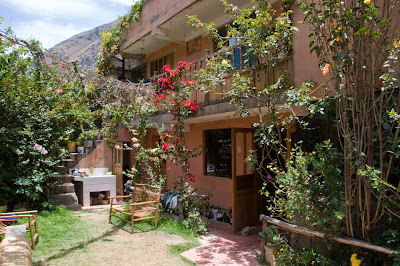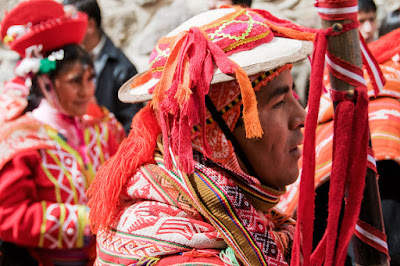goodbye Ollanta!
Last Tuesday, we bid farewell to Ollanta and set out for what's going to be a somewhat whirlwind journey through Peru, Bolivia and Chile. While the trip so far has been awesome and I'm really excited for the next two weeks, it was definitely sad to say goodbye to the place that had been home for the last two months.
For our first month in Ollanta, home was a homestay with Yoni, Alcides and Pierro. Their house was actually still being built when we lived there, but our room was quite nice, and the temporary kitchen turned out to be pretty cozy (and Yoni is an awesome cook!). I'd been really worried about living in a homestay, but it turned out to be a really nice experience with a really warm, kind family who we adored. We managed to fumblingly communicate despite our horrible Spanish (I think mostly thanks to Yoni, who is really patient and good at sifting out meaning from broken, baby Spanish) and had a great time goofing around with the awesome seven year old Pierro, who gave me a stack of his pogs on my last day "to play with in America."
Pierro looks way happy for a kid who hates the taste of Pisco Sour foam.
I'm really glad we lived in the homestay for the month that we did (it was too expensive to stay longer), and would definitely recommend it. Particularly if you end up with Yoni's family, because they're awesome.
From the homestay, we moved into the Awamaki volunteer house, which, with five other people and seven puppies, was at full capacity and then some. It was a bit like being in a college dorm again, albeit with way more dogshit on the floor, but we lived with some really nice people, and it was much more affordable than the homestay (and I eventually did find away to avoid getting electric shocks from the shower, so, good times all around).
As for volunteering, I'm really happy we did it - I got to take thousands of photos I'd never otherwise have gotten the chance to take, in tiny mountain communities I'd have never otherwise seen, and I think at least some of them are going to be used on the website or for promotional materials, which is hugely exciting; Iain had a great time hiking and helping out with the health projects. There were a few weird bits about it, but it was a positive experience overall, and one that we'll always remember fondly - we were always happy to be living in Ollanta, in our small, pretty town in the mountains. So, goodbye for now Ollanta! More to come from further down the road...































































